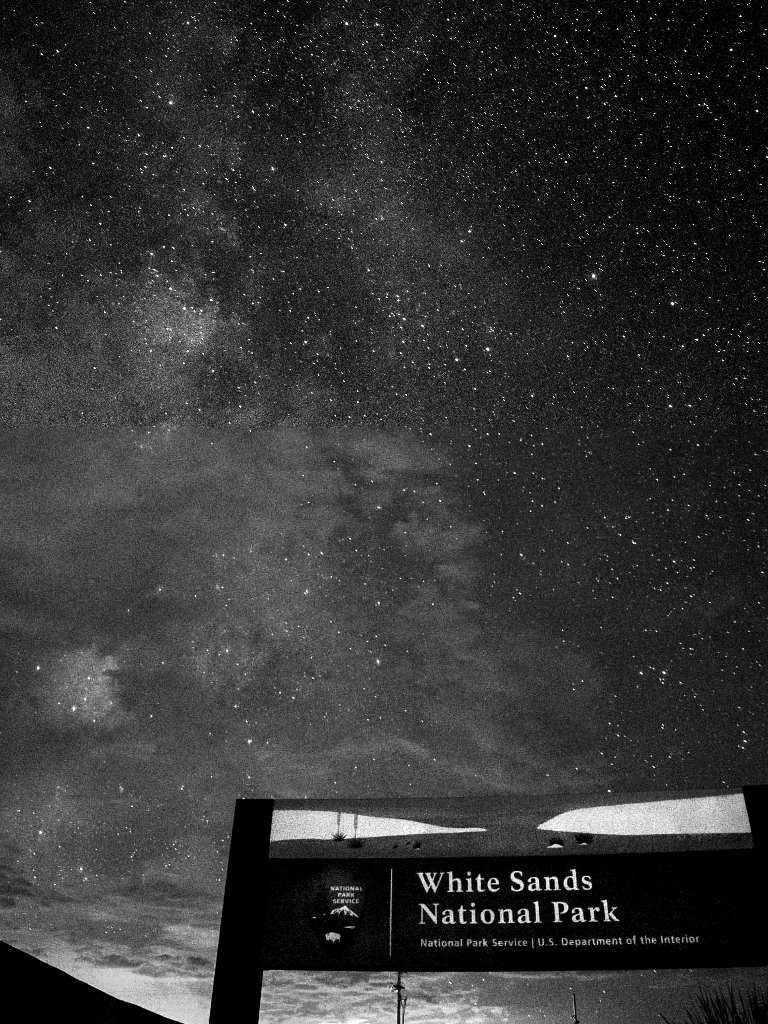
When and where was the last time you stopped to appreciate a dark night sky? Today it is rare for many people to have the opportunity to appreciate the everchanging night sky, but it is always there night after night whether we take notice or not. When the world shifts to darkness, most of us humans settle into our homes, close our eyes, and go to sleep. Out here at White Sands however, the park residents relish in the darkness. When visitors are done with their picnics, sledding, and taking selfies the park gets dark, quiet, and nocturnal animals emerge to start their day. This is when moths appear, fluttering from yucca to yucca, making sure they will bloom again next season. Bats squeak, flap, and swoop for prey. Kit foxes’ tiny paws scuttle along the dunes, chasing creatures with tinier paws. A bobcat lurks through the dunes, its eyes aglow in the moonlight. You may associate darkness with evil, uncertainty, and danger, but darkness is essential for all living things. The absence of light allows natural rhythms to take place. Artificial light disrupts this rhythm and alters the behavior of nocturnal animals. Imagine trying to sleep with the lights on or getting up for breakfast in the middle of the night. For us, darkness signals the end of the day and for nocturnal animals the beginning of theirs. In the absence of light, they can navigate, nest, hunt, and hide. Beyond helping nocturnal critters maintain their groove, the night sky has been an inspiration since the beginning of human history. On a clear night, how many stars can you see from your house? What can you do to see more? Perhaps a porch light or a bright floodlight is trespassing on your vision. The more artificial light that is near you, the fewer stars you will see. With few large population centers nearby, the remoteness of White Sands makes it an oasis for nocturnal animals to live undisturbed and for visitors to catch awe-inspiring views of the Milky Way. Tonight, and during your travels, we encourage you to keep your eye on the sky. Observe the darkness in different locations and recognize that this valuable resource is disappearing as we sleep.
Is there something we missed for this itinerary?
Itineraries across USA

Acadia

Arches National Park

Badlands

Big Bend

Biscayne

Black Canyon Of The Gunnison

Bryce Canyon

Canyonlands

Capitol Reef

Carlsbad Caverns

Channel Islands

Congaree

Crater Lake

Cuyahoga Valley

Death Valley

Dry Tortugas

Everglades

Gateway Arch

Glacier

Grand Canyon

Grand Teton

Great Basin

Great Smoky Mountains

Guadalupe Mountains

Haleakalā

Hawaiʻi Volcanoes

Hot Springs

Indiana Dunes

Isle Royale

Joshua Tree

Kenai Fjords

Kobuk Valley

Lassen Volcanic

Mammoth Cave

Mesa Verde

Mount Rainier

North Cascades

Olympic

Petrified Forest

Pinnacles

Rocky Mountain

Saguaro

Shenandoah

Theodore Roosevelt

Virgin Islands

Voyageurs

White Sands

Wind Cave

Yellowstone

Yosemite

Zion